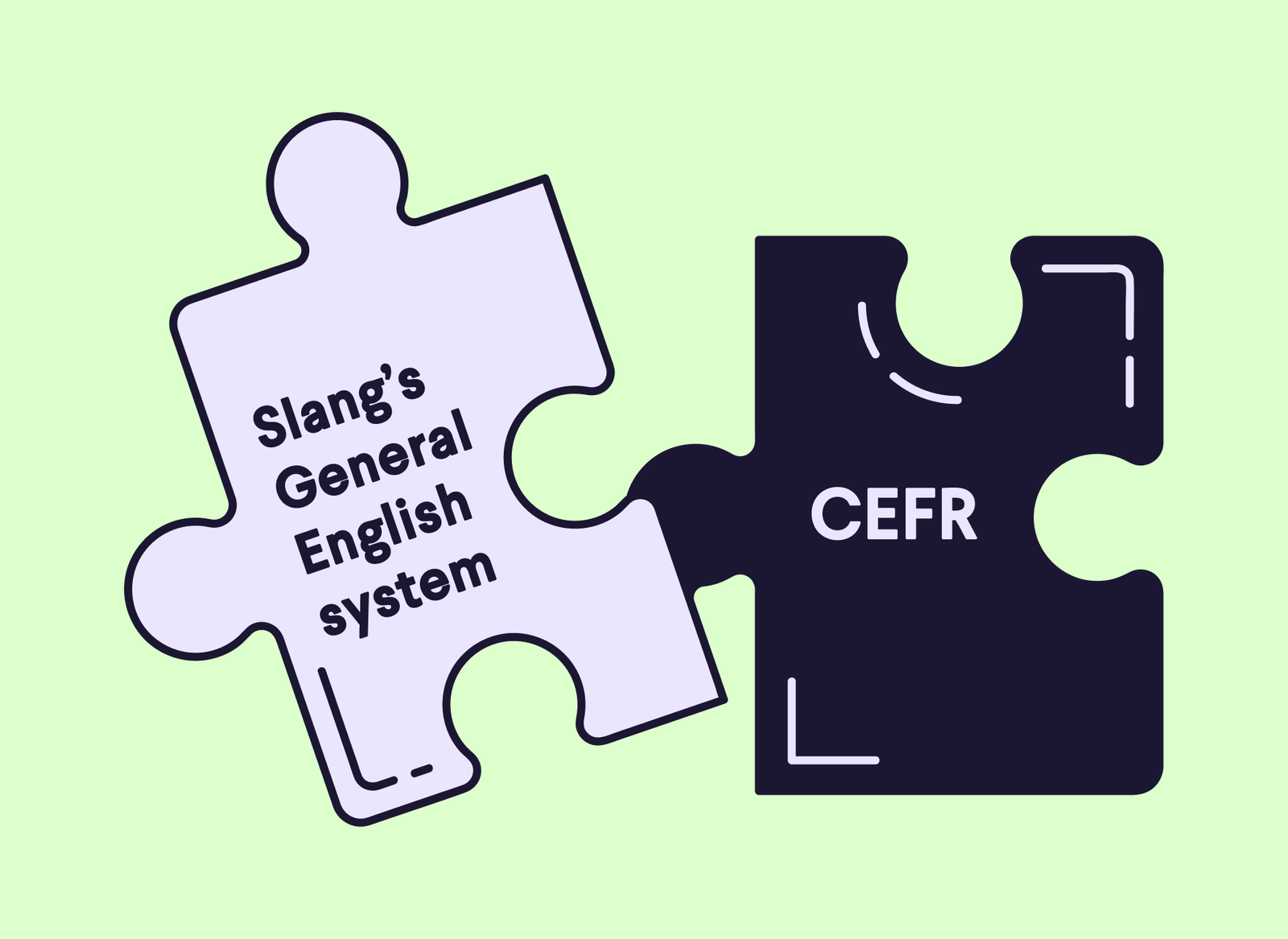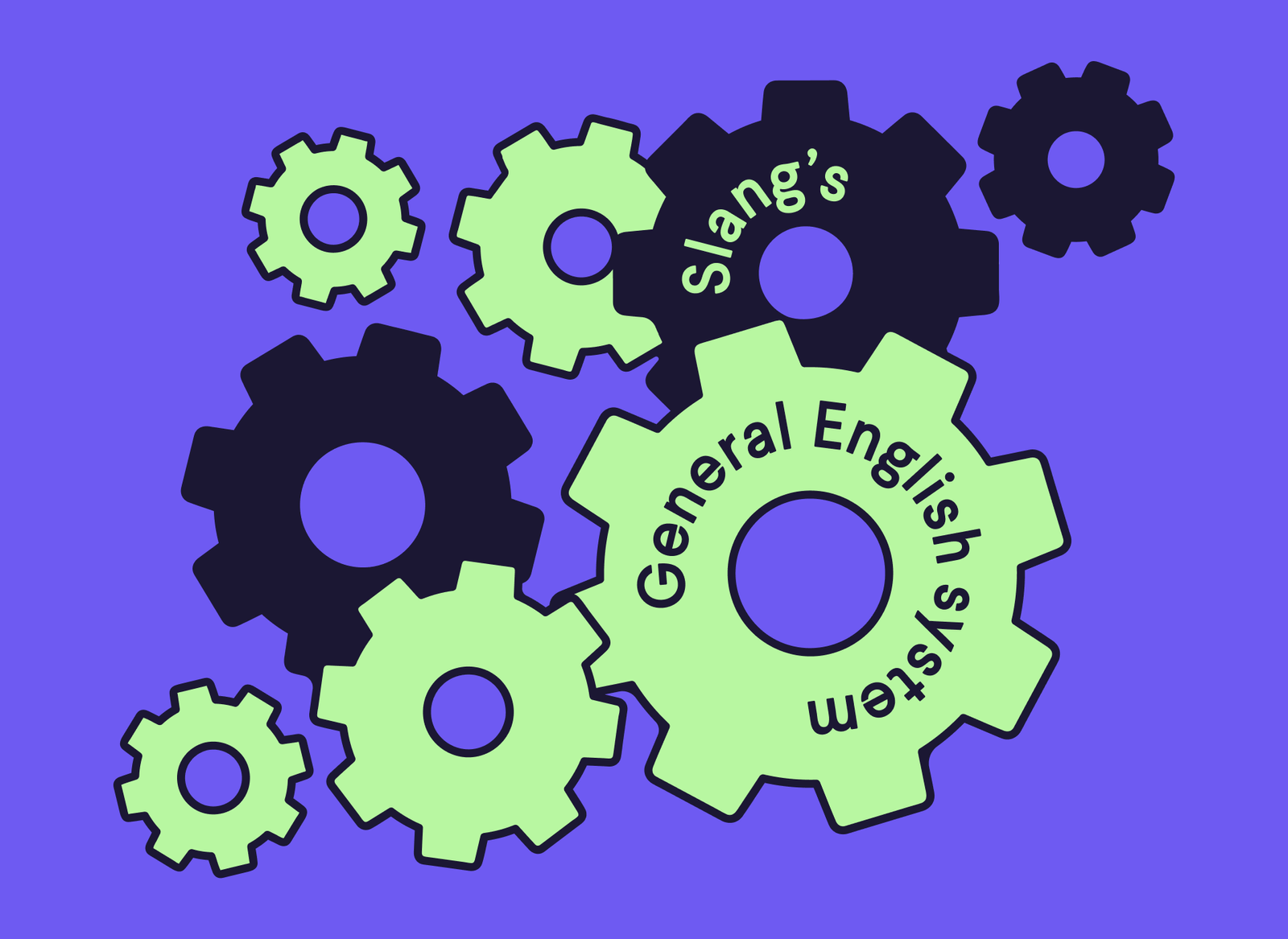Language is an extremely complex phenomenon. It takes much more than just memorizing vocabulary or grammar structures to be able to understand the unspoken intention behind a persuasive speech, or to respond politely to a frustrated client. In other words, we believe that proficiency in a language is best measured by the learner’s ability to communicate with others. Slang’s General English test tries to capture at least some of this linguistic complexity by measuring a learner’s ability to use language skills in communicative contexts.
Our General English test is designed for adult professional English learners with an overall proficiency level between beginner and advanced intermediate. (If you are interested in measuring technical English ability within a specific field, Slang also offers professional English tests for this purpose.) In order to provide a comprehensive picture of each learner’s language skills, the General English test covers four different sections: reading, grammar, listening, and speaking.
Given that the test measures multiple skills, it is important to mention that it is not realistic to expect someone to perform equally well in all four skills. It is completely normal for learners to have certain strengths and weaknesses in English, due to their previous English study or to their own innate abilities. This is why an adaptive curriculum is vital for the most efficient learning methodology. If there are two learners who are placed into the same overall course, but one is better at speaking and the other is better at reading, Slang can detect their relative abilities based on their performance and customize their study lessons accordingly. So, organizations can encourage their learners not to worry too much about being defined by their test results. The General English test is not about passing or failing, it is about customizing your study plan for the greatest learning success!
For the test to function effectively, it is essential that users be presented with content of an appropriate difficulty for their level. We ask users to provide a very general self-assessment of their English abilities before beginning the test in order to make the test more adaptive. The content and activities shown to the user will vary depending on the level of difficulty. However, all the activities of the test are designed to measure the user’s ability to apply the specific skill being tested in real-world communicative situations. Here are some examples of the more specific linguistic skills measured by the various activities in Slang’s General English test.
Reading section:
- Test-takers are asked to match a written word with a corresponding photo. This activity (shown to beginners) measures their ability to recall English terms by associating them with the concept rather than falling back on mental translation.
- Test-takers are asked about the implied meaning of a sentence. This assesses their ability to understand not only the literal meaning of words, but also the speaker’s intention.
- Test-takers are asked to choose the correct words that fit in a paragraph. The test has users drawn on context clues in order to identify the appropriateness of a specific word in a given context.
Grammar section:
- Test-takers are asked to choose the phrase which best completes a sentence fragment. This activity requires the learner to integrate both structural knowledge and vocabulary knowledge in order to pick the option which both sounds correct and creates a logical situation.
- Test-takers are asked to choose the grammatical form of a word which fits best within a sentence. This activity reflects the fact that grammatical forms are not arbitrary rules to memorize but actually impact the meaning of the sentence – often changing the grammar produces an illogical sentence!
Listening section:
- Test-takers are asked to write down a sentence that they heard. This dictation skill is highly relevant for many work contexts, such as taking client orders over the phone or taking notes in a meeting!
- Test-takers are asked comprehension questions about a conversation. This assesses their ability to listen for meaning and focus on key points and takeaways.
- Test-takers are asked to answer questions about implicit information in a conversation or monologue. Making inferences is a high-order thinking skill needed in every professional career!
Speaking section:
- Test-takers’ ability to pronounce the sounds of English correctly is assessed. Slang is one of the only tools on the market that can offer phoneme-level pronunciation assessment and coaching to help your employees with accent reduction!
- Test-takers are asked to respond appropriately to a comment or question, measuring their ability to understand the context and implication of a given situation and engage in conversation.
As you can see, it’s not the case that a person is either good at English, or they aren’t. Learning a new language involves a wide range of complex and at times subtle skills to enable you to communicate in all the scenarios you’ll encounter at work. Fortunately, with Slang’s General English test, you’ll get better insight into each of your employees’ strengths and weaknesses in order to help them progress rapidly towards becoming bilingual professionals.
Also, not only do we offer your organization Slang’s General English test, but we have professional and General English courses as well. So, if your employee didn’t do an amazing job on the test, maybe it’s time to go beyond basic with our professional English courses. Slang has over 120 of those, allowing us to create a personalized career path that helps your employees learn the language in the best way for their profession.
Learn more about it here. Join Slang today!






